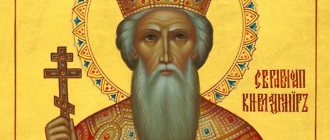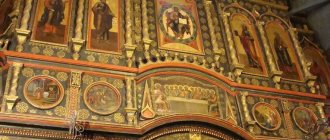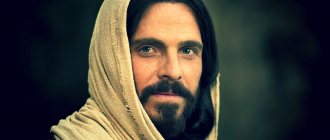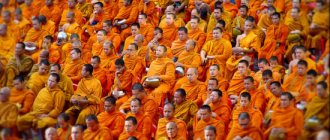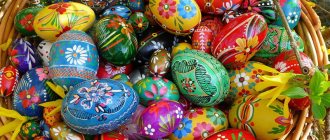The meaning of the word "Easter" can be found in many languages, such as Hebrew, Latin or Greek. What is noteworthy is that the translation of this term in all languages is absolutely the same - “passing by”. People who profess Orthodoxy are more familiar with this word, which serves as the name of the most important festival in their religion. This celebration is also called the Ascension of the Lord. It is celebrated after Lent and falls on different dates every year. However, why was Easter called Easter? The answers to this question can be found further.
How Easter was celebrated
Looking through ancient manuscripts and literature, it is easy to discover that the Easter celebration was celebrated even before the Nativity of Christ. The event was an established celebration of the Jewish residents. It was customary to celebrate this day in a narrow family circle. The main celebration took place on the day of the new phase of the moon.
And yet, why is the holiday called “Easter”? On this day it was necessary to make a sacrifice, which was called Easter. A young lamb or goat was killed so that heavenly grace would descend on the herd and its leader. The sacrifice was made with caution, since it was considered shameful to damage even one bone of an animal when slaughtering. The blood of the lamb was used to smear the doors, and the meat was eaten in the house. From this ancient celebration came the tradition of calling this day that way.
Why is Easter called Easter? What other arguments are there? The holiday itself took on a different, broader and more sacred meaning. Still, the Son of God sacrificed himself to protect all humanity and so that the power of his father would descend on all people. With metaphysical significance, the celebration of Easter is considered the most important for the people today. According to legend, it was on this day that humanity gained a second chance, purifying itself with a sacrifice made out of love and receiving a blessing. This is why people adhere to strict fasting before Easter.
Holy Easter - what does it mean?
However, the verbal similarity is only a superficial coincidence, and, of course, it is not decisive. As always, to truly understand something, we should focus on the main thing and forget about the unimportant. Any holiday has its own spiritual basis - this is the content, meaning, i.e. its very essence.
What is the meaning of Easter ? The Lord sent his only son Jesus Christ to earth, who, at the cost of his own life, took upon himself the sins of all mankind and thus freed them from the slavery of sin. Yes, people today are sinners - after all, life on earth is far from ideal.
However, every person can count on God's mercy and forgiveness of his sins. This is called judging by mercy, i.e. not by merit, but by love.
What is the meaning of Passover ? The Lord chooses Moses, who rescues the Jewish people from slavery, i.e. brings him out of Egyptian captivity. Moses, thus, appears as a savior, a national hero of the Israelis. In that story, God's mercy and omnipotence were revealed to the people - after all, on the way to their promised land, people faced a lot of trials. But still they passed them and achieved the main goal - liberation.
It turns out that the very essence, the core of these two big events is, in general, one. One more similarity can be found - the dates fall in the spring time between March and April. Perhaps this is the best time on earth, when winter finally gives way to spring, and farmers are preparing for a new sowing season. And this coincidence is by no means formal.
Many historians believe that, generally speaking, welcoming spring is a very ancient tradition, which, undoubtedly, was reflected in the celebration of Easter. This is easy to believe if we think about the significance of spring for our distant ancestors.
Today food is available all year round, including fruits, mushrooms and other summer products. But for many millennia all this was achieved with great difficulty. And it is no secret that man was extremely dependent on nature, including his life.
There will be a bad harvest year - and everyone can only think about spring coming. After all, this is the time of life when the sun heats up more and more, and the grass grows faster and faster. The first fruits, berries, vegetables and fruits appear. This is the triumph of life over death, liberation from former fears.
That is why, despite the huge number of differences between Easter and Passover, there is also a lot of commonality between them. And this commonality lies at the very basis of the holidays. The main characters change, traditions change. But the essence still remains the same.
Easter is the day when we celebrate the rebirth of nature, liberation from the power of sin and death. And everyone can continue this line on their own: Jews will write the name of Moses, Christians will write the name of Jesus. But the initial phrases will remain unchanged.
Kulich - a symbol of the Resurrection
Large fragrant bread (yeast cake) with the image of the Resurrection or with a cross is considered a ritual baked goods in the Orthodox Church and signifies the rebirth of Jesus. Why is Easter called Easter? Yes, because this cake is also an integral part of the holiday. It is usually baked for the main religious celebration of all Orthodox Christians - Easter. Christians, in addition to Easter bread, also serve shortbread “babka”. Together with colored eggs, Easter curd and Easter cake are the main dishes of the festive feast.
Spiritual designation of Easter cake
Artos (translated from Greek as “leavened bread”), a tall yeast pastry with a silhouette of a thorn halo and a cross design, as well as prosphora are baked separately to celebrate Easter and the Resurrection of Christ. According to the Old Testament, the apostles, when they began to eat, left a part in the center of the table empty in order to put bread for Jesus Christ, who was invisibly nearby.
Why is Easter called Easter? There are some other legends that can tell about this. On Easter Day, the artos is carried with the procession and placed in the church on a special table. All week this bakery lies in the monastery. After the blessing on Saturday Bright Week, it is given to all believers. This is a symbol of the fact that Christ became the true bread of life for the Orthodox.
The cake itself is similar to artos. Such pastry is baked during Holy Week on Maundy Thursday and blessed in church. Yeast is used to bake bread (this dough replaces the Old Testament unleavened bread). Consequently, Easter cake is also a sign of the progress from the Old Testament to the New.
Easter in folk tradition
In Slavic folk People
- the population of the state, a single socio-economic and political community, regardless of division into national communities.
In a general sense, the concept of “people” means a national-cultural community isolated from others, the boundaries of which usually do not coincide with state borders. In this sense, the term “people” is synonymous with the concepts of “nation” or “ethnic community”. On the calendar, the time of the Easter service was considered favorable for performing magical actions and fortune-telling. Fortune telling
- finding out the future or past (from cards and other means), in particular to ensure good luck in some business.
Thieves “stole” that night, that is, they tried to quietly steal something from parishioners in order to feel safe all year; hunters at the cry of the priest Priest
(priest, priest) - an Orthodox clergyman who is allowed to independently conduct worship;
the official address is “Your Reverence”, the everyday (colloquial) address is “father”, “father”. The solemn title is presbyter. The senior priest is called an archpriest. "Christ is Risen!" they shot into the air near the church threshold, believing that this would make their guns hit without missing; fishermen instead of answering “Truly he is risen!” they said: “But I have fish!”, which supposedly provided themselves with full nets for the whole season, and the girls Girl
:
1) A female person in the transitional age from adolescence to adolescence.
2) A person who has reached puberty but has not yet entered into marriage. turned to God with a request to send them suitors.
Sleeping through the Easter service was an unforgivable sin. Sin
- in religious ethics, moral evil, which consists of violating the will of God by action, word or thought.
The concept of “sin” is distinguished from the more ancient and non-moral concept of “filth” (as if physical infection or uncleanness, resulting from the violation of sacred prohibitions - taboos); theology highlights the “original” sin of the first people, the consequences of which are inherited by their descendants.. As punishment, such people were bathed or doused with water the next day (cf. decree of the Synod Synod (
from the Greek synodos - meeting) - a meeting of the highest church hierarchy in some Orthodox and Protestant churches; in the Catholic Church, after the 2nd Vatican Council (1962-65), an episcopal synod was formed in 1721, according to which, in particular, it was forbidden “according to an ancient superstitious and harmful custom to bathe or pour water on those who do not attend matins”). A person who slept through Easter Matins was threatened with failure throughout the year.
According to popular beliefs, on Easter night one could recognize evil spirits: by coming to church the Church
(from the Greek kyriake (oikia), literally - God's house) - a concept specific to Christianity of the mystical community of believers ("faithful"), in which the unity of man with God is realized through joint participation in the "sacraments" (primarily the Eucharist).
The universal (“ecumenical”), “catholic” (“conciliar”) character of the church as the mystical “body of Christ” and “the fullness of the Holy Spirit” makes it impossible to identify it with any ethnic, political or other community (tribe, nation, state). in new clothes - see sorcerers standing with their backs to the altar; bringing cottage cheese or cheese prepared in a special way to church - recognize the witches among the parishioners. Witch
- according to popular belief, a woman is a witch.
The idea of witches as women who entered into an alliance with evil spirits led to their persecution, the so-called “witch hunts” - mass trials against witches organized by spiritual and secular authorities in medieval Europe, as well as similar processes in later times in the New Light. In a broader sense, it is understood as the persecution of dissidents. on small tails. On Easter, as on Holy Thursday, going up to the attic or bell tower with a candle burning since Matins, one could see the brownie Domovoy -
in the beliefs of the Slavs and other peoples, the spirit living in the house, the guardian of the house, sometimes punishing for violation of customs.. Easter night was the time when the dead appeared on earth.
Hiding behind the altar during the religious procession in the church, one could watch the dead pray and offer Christ to each other. They believed, however, that a person who betrayed his presence in the church could pay for it with his life. Life
is one of the forms of existence of matter, which naturally arises under certain conditions in the process of its development. Organisms differ from inanimate objects in metabolism, irritability, ability to reproduce, grow, develop, actively regulate their composition and functions, various forms of movement, adaptability to the environment, etc. It is believed that life arose through abiogenesis..
house as quickly as possible.
- your home, as well as your family, people living together, their household, in order to be ahead of others in all matters during the year. However, often, without going home, they went to the cemetery to notify their deceased relatives about the Resurrection of Christ and to share Christ with them.
Easter breakfast usually took place in a narrow family circle, since visiting on the first day of Easter was not customary. The first Easter egg was often eaten by the whole family. Family
- a small group based on marriage or consanguinity, whose members are bound by a common life, mutual assistance, moral and legal responsibility. How a stable association arises with the decomposition of the tribal system.
The first historical form of monogamy was the patriarchal family (ruled by the father, including his descendants with their wives and children, as well as domestic slaves). Industrialization destroys the connection between the family and home production, leaving only the organization of everyday life among its economic functions; most families consist of spouses and their children (nuclear family).
There are two contradictory trends in modern society: the renewal of the family on the basis of industrial and cultural progress (the transformation of the family into a moral and legal union of a man and a woman) and the growth of family conflicts and a significant number of divorces. Most marriages are concluded by the personal choice of the future spouses, and family relationships are increasingly characterized by their equality, dividing it according to the number of household members. The custom of sharing Easter food with each other became widespread among the Eastern Slavs; in particular, on the first day of Easter, the priest and clergy, as well as household members, “prayed paska,” that is, they exchanged pieces of Easter cake or ate it together, cutting it into small pieces. The custom of sharing an Easter egg with others received symbolic interpretations: for example, to find the road Roads
- the general name of all types of land routes intended for the movement of people, vehicles and goods. home, a man lost in the forest only had to remember with whom he shared an Easter egg.
Many magical properties were attributed to blessed Easter eggs, their shells, as well as the remains of other Easter dishes, such as pig bones. People walked around a building that was on fire with an Easter egg or threw the egg into the fire, hoping that it would help stop the fire; with Easter eggs they looked for lost cattle, put them in the seed grain, stroked the cow with them during the first spring pasture, buried them in the field so that the flax heads were the size of eggs; Pig bones were also buried in crops to protect them from hail.
Throughout the week, starting from the first day of Easter, the priests, accompanied by the clergy
- a staff of clergy (priests and deacons) and clergy (sacristans, psalm-readers, sextons, readers, etc.) in the Orthodox Church. The composition depends on the number of parishioners and is approved by the bishop. and the most pious parishioners went around all the houses in the village with icons and served Easter prayer services there, for which they received a reward.
From the evening of Easter Sunday, groups of men called “Volochebniks” or “Christians” went from house to house, congratulating their owners on the holiday. They sang special majestic congratulatory songs under the windows Song
- a type of verbal and musical art; genre of vocal music (folk and professional).
The musical form of a song, like its poetic form, is usually verse or strophic. Classification of songs: according to content - lyrical, patriotic, satirical, etc.; by social function - ritual, household, military drill, etc.; according to the executive composition - solo, choral, with and without instrumental accompaniment.
In Russian and French music of the 19th century, the art song was usually called a romance. At the end of the 19th and beginning of the 20th centuries, song was divided into professional-academic and so-called. popular (including pop and mass).
A song is sometimes called an instrumental work of a melodious nature, describing the economic activity of a peasant and his wealth; and the chorus of these songs included the traditional Easter greeting: “Christ is risen, son of God!” Poles walked around their houses on Easter, carrying or carrying with them a live or wooden rooster as a symbol of the risen Christ.
During Easter week, the Western Slavs practiced mass dousing among youth. Monday was a men's day (guys, boys, men showered girls and women), and Tuesday was a women's day. The guy tried to splash the girl he liked, in response, with consent, she gave him colored eggs or presented him with other gifts. Gift
:
1)
The thing that is given is given.
2)
Something good, pleasant (usually as a sign of respect, gratitude).. During Easter pourings, a public assessment of behavior was also revealed.
Behavior
is the interaction inherent in living beings with the environment, including their motor activity and orientation in relation to this environment. The behavior of animals and humans is studied by ethology, psychology, and sociology.
In a broad sense, they talk about the behavior of objects of various kinds (for example, an electron in a magnetic field, etc.); since the mid-20th century, the term “Behavior” has been applied with a certain convention to complex automatic systems of modern technology. this or that girl: it was considered shameful if she was not doused on Easter Monday, thereby condemning her for cheeky behavior or other sins.
Among the Easter entertainments, the main place was occupied by games .
- a type of unproductive activity, the motive of which lies not in its results, but in the process itself. In the history of human society, it has been intertwined with magic, cult behavior, etc.; is closely related to sports, military and other training, and art (especially its performing forms). It is important in the upbringing, training and development of children as a means of psychological preparation for future life situations. Play is also characteristic of higher animals. with colored eggs, first of all - rolling eggs on the ground or from special trays, as well as “cue balls” - beating with colored eggs.
Among the Eastern Slavs, during the entire Easter week, anyone could climb the bell tower and ring the bells, which is why Easter week received the name “Ringing”. The bells and tunes performed on Easter were far from traditional liturgical bells; folk melodies were widely used in them Melody
(from the Greek melodia - singing, melody, song) - a monophonically expressed musical thought, the main element of music. Melody is a series of sounds organized modally, intonationally, rhythmically and forming a certain structure. A specific component of a melody is a pitch line. and free improvisation. During the entire Easter week, Russian girls gathered in the bell tower, sang songs there, danced and, of course, rang the bells. There was a belief that the one who, after breaking his fast with Easter bread, rang the bells first, would live until the next Easter Sunday.
A magical meaning was also attributed to the Easter bell. Meaning
- ideal content, idea, essence, purpose, ultimate goal (value) of something (the meaning of life, the meaning of history, etc.); the holistic content of any statement, irreducible to the meanings of its constituent parts and elements, but which itself determines these meanings (for example, the meaning of a work of art, etc.); in logic, in some cases in linguistics - the same as meaning... Thus, Ukrainians[en] and Poles believed that the Easter ringing had a positive effect on the growth of buckwheat, and also “awakened” bees from winter sleep. In Russia[en], where flax and hemp were traditionally treated with special care, it was mainly women who hurried to the bell tower on Easter. It was believed that the one who would ring the bells on the first day of Easter would have long and fibrous flax. People not only rang the bells themselves on Easter, but also carefully monitored the correctness of the Easter peal. If the bell-ringer was a little late and did not ring immediately after mass, then a poor harvest was expected.
Other Easter amusements include swings, as well as round dances, in which future married couples were usually named and newlyweds who got married during the last year were celebrated. Mutual visits to close relatives were mandatory for the Easter holidays.
On Easter or the week following it, St. Thomas's week, there was a mass commemoration of the dead. (Pyotr Dmitrievich Sakharov - Russian scientist-orientalist Orientalist
(oriental studies) is a complex scientific discipline that studies economics, languages, history, religion, philosophy, art, ethnography of the countries of Asia and North Africa, that is, the countries of the East.
It is divided into separate branches, such as: Japanese studies, Arabic studies, Egyptology, Assyriology, Iranian studies, Malaya studies, Korean studies, Mongolian studies, Indology, Sinology (Sinology), Semitology, Turkic studies. Previously, African studies was distinguished in oriental studies, however, later it became a separate independent discipline; a similar situation occurred with the culture of the peoples of the countries of the Asian north and Siberia., liturgist, journalist, Christian publicist, translator)
Easter is the biggest and brightest holiday of the year. This day, as a rule, is sunny. And the sun plays in the morning, shimmering with different colors.
Science[en] has not yet explained this phenomenon. But for believers everything is clear. The word “Easter” came to us from the Greek language and means “deliverance, “passing away.” Although there are versions that “Passover” comes from the Hebrew verb “passover”, which is translated as “pass over”. According to another word from the Assyrian “pasahu” - to pacify.
Easter was quite late in 2021. It fell on May 1st according to the new style.
The Holy Resurrection of Christ - Easter - is one of the 12 twelve holidays especially revered by the Christian Church.
Easter Day is mobile, transitional, celebrated on the first Sunday following the full moon of the spring equinox, and in no case earlier than it. Several other holidays depend on the day of Easter, which are celebrated on the days indicated in Easter. Easter is always celebrated on Sunday. It is a symbol of the triumph of the Savior over the forces of evil. Life conquers death. At Easter, people joyfully greet each other: “Christ is risen!”, “Truly risen!”
There was an ancient Easter custom of sacrificing a lamb; Jesus Christ sacrificed himself and becoming the Divine Lamb, filled the holiday with a different meaning.
Easter is celebrated by non-religious people and even atheists. After all, many of us have been accustomed since childhood to grandma’s Easter cakes, Easter eggs sweetly smelling of vanilla, and eggs dyed with onion skins.
And then every person wants a holiday - beautiful, bright and joyful.
Nikolai Andreevich Koshelev (1840-1918). Children[en] rolling Easter eggs. 1855 Canvas, oil. Russian Museum, St. Petersburg.
Many people are already saying “happy belated holiday,” but this is not entirely true. Easter is celebrated all 40 days before the Ascension, and especially on Bright Week immediately after Easter Day. And this is not counting the fact that we celebrate the Resurrection every Sunday - that’s why this day of the week is called that.
In fact, every day of a Christian who lives a spiritual life, following Christ in his thoughts, words and actions, can be filled with Easter joy. It is not for nothing that Saint Seraphim of Sarov greeted everyone who came to him all year round with the words: “Christ is risen, my joy!”
What does the Old Testament say?
In this commandment, the Passover lamb was called the lamb killed for the festival - an example of Jesus' next sacrifice. By sacrificing himself, he protected the human people from grief, torment, punishment and hell. When Jesus rose from the dead, he appeared in new flesh.
Why is Easter cake called Easter? There is an answer to this question. In the Old Testament at one time there was no concept of Easter cake. The Passover lamb was eaten with tasteless unleavened bread (cakes) and bitter herbs. Easter bread has pagan origins and is considered a symbol of the Phallus, the pagan god of fertility. The spiritual essence of Easter cake lies in the fact that, by eating it, the Orthodox people approached the light of the Resurrection.
The symbolic meaning of Easter
Belief in the resurrection of the Savior from the dead is the basic doctrine of Christianity. It is believed that Christ, who died on the cross and rose again three days later, won victory over death itself. The very doctrine of the descent into hell is based on several texts from Holy Scripture, primarily on the message of the Apostle Peter.
According to Christian doctrine, before the coming of the Savior, the doors of heaven were closed to people: both sinners and righteous people fell into the underworld. On the second day after his death (that is, on Passion, or Great Saturday), Jesus Christ descended into hell and freed from it the souls of the Old Testament righteous and the first people - Adam and Eve. The Savior also opened the way to heaven for those who believed in him. Believers remember the descent of Christ into hell during services in the last week before Easter (the Passion of Christ).
Why is Easter called Easter?
In popular custom, Easter was celebrated as a celebration of the renewal and development of life. This was predetermined not only by the Orthodox thought of the Rebirth of Jesus, but also by the existence in folk customs of pagan opinions about the spring awakening of nature after winter sleep.
According to popular religious concepts, any person should have celebrated Easter restored physically and spiritually, prepared for it during the long period of Lent. Before Easter, it was necessary to restore order on the streets and in houses, wash walls, floors, windows, whitewash ceilings and stoves, repair fences, and take out the garbage that had accumulated after the winter. In addition, it was necessary to wash well in the bathhouse and sew new clothes. On this bright holiday, a person had to forget all insults and evil, remove all bad thoughts, not enter into marital relations and not sin.
Different beliefs
Why is Easter called Easter? After all, this holiday is fraught with many legends. Easter Day is so pious and pure that demons and devils fall through the ground, and their screams and sobs can be heard during the Easter Vigil.
The peasants believed that on this day they could see what was invisible on ordinary weekdays, and they asked the Lord for everything they wanted. It was believed that if you lower the candle with the flame downwards during the Easter service, you can see the miracle worker. And if you stand at the threshold with cottage cheese, then you can easily recognize a witch walking by and waving her tail.
What happened on Easter night
The Russian people associated Easter with the fulfillment of desires. People believed that on this day they could ensure success in their work for the whole year. If an elderly person combs his hair on Easter Day, he will have as many grandchildren as there are hairs on his head. And if during the service a young woman turns to God with requests to send her a good husband, then the groom will propose to her soon.
The idea of resurrection from the dead formed the basis of the opinion that on the night of Easter the spirits of the departed descend to earth. If desired, those who grieved for the death of their loved one could see him in church at the liturgy, listen to his complaints and appeals.
Gospel Events
The moment of resurrection itself is not described in the canonical New Testament texts. The Holy Scriptures, as well as some apocryphal sources, tell only about the events associated with this biblical miracle.
After the death of the Savior, Joseph of Arimathea, a member of the Sanhedrin and secret disciple of Christ, turned to the Roman governor, the procurator of Judea Pontius Pilate, with a request to take the body of the deceased. Having received permission, Joseph buried Jesus in his crypt, located in the garden of Golgotha, and blocked the entrance to the tomb with a heavy stone slab. The Savior's body was buried on Friday (Good or Good Friday), the eve of the Jewish Passover.
At dawn on the third day, women, disciples of Jesus, who had arrived with him in Jerusalem from Galilee, headed to the cave. They wanted to ritually anoint the body of the deceased with special incense (mirror). Approaching the tomb, the women saw that the stone at the entrance had been moved and the crypt was empty. All that remained in it was the funeral shroud and the scarf with which the Jews covered the face of the deceased. The myrrh-bearing women were the first of Christ's followers to learn about the miracle of the resurrection and informed the rest of his disciples about it. The day on which these events took place is now called Sunday.
Why is cottage cheese called Easter?
Often people cannot distinguish Easter from Easter cake, and this is very common. In reality, Easter cake is a flour product, and Easter is a cottage cheese product. The tradition of creating a curd product for Easter is more common in the central parts of Russia. In other regions, they simply don’t know about this product, and they call it Easter cake.
Why is Easter called Easter? Also because preparing a curd product is as important a process as baking Easter cakes. There is an opinion that this culinary product represents the Holy Sepulcher (its shape resembles a truncated pyramid). This dish, like Easter cake, is considered one of the main symbols of the Holy Resurrection of Christ. And similarly, it, being a dessert dish, means the pleasure of endless life. There are also suggestions that Easter is a symbol of Heavenly Zion - the origin of the New Jerusalem.
Easter, paska and Easter cake. Where did the Easter distinction, so important for Ukrainian patriots, come from?
Poems or stories dedicated to Easter can be found in, perhaps, every classic writer. Alexander Kuprin, who glorified Kiev, was no exception . The action of his story “In a Family Way” took place in this city.
“It was... really, now sometimes it seems to me that it was three hundred years ago: so many events, people, cities, successes, failures, joys and sorrows lay between now and then. “I lived then in Kiev, at the very beginning of Podol, under the Aleksandrovskaya Hill, in the Dnieper Harbor rooms, kept by a former steamship cook, fired for drunkenness, and his wife Anna Petrovna - a real hyena in deceit, greed and malice,” began his story writer.
There were six permanent residents in the rooms, and all were single people, Kuprin described. Butkovsky who was addicted to playing cards , a student “with a fat and mustacheless face”, who would later become a famous prosecutor, highway technician Karl - “a fat Ostsee, a shaking beer drinker”, Kuprin himself and the prostitute Zoya , “whom the mistress respected more than others." As the writer recalled, they were all “familiar and seemingly unfamiliar.”
And so, on Easter, which Kuprin celebrated alone, the bellhop Vaska handed him a note.
Dish for Christmas, Giving Evening, Baptism and Funeral
©
RIA Novosti, Viktor Tolochko / Go to photobank
“Deep-skinned No. 8. If you are free and not disdainful, I beg you to come to me at the number of the Holy Easter fast. “You know Zoya Kramarenkova,” it read.
It turned out that other residents also received the same notes. As a result, everyone gathered at Zoya’s, except for the student.
“Her room was exactly how I imagined it. On the chest of drawers there are empty bombonnieres, sticky pictures, greasy powder and hair curlers. On the walls are faded photographs of mustachioed and curly-haired pharmacists, proud actors in profile and formidable ensigns with drawn sabers. On the bed there was a mountain of pillows under a tulle cape, but on the table, covered with paper cut out like lace, there were Easter eggs, Easter cake, eggs, a leg of ham and two bottles of some mysterious wine,” Kuprin described the room of Zoya, a former country girl. .
Ukrainian patriots would instantly accuse a writer who dared to write such a thing today of “ignorance of local peculiarities.” After all, in their opinion, no Easter cakes were baked in Kyiv and the surrounding area. Easter cakes were baked instead.
The difference is one letter
Paska is what Easter cake is called in Ukraine, as assured by Ukrainian TV channels, which these days publish videos with Easter cake recipes, and by numerous experts.
And indeed, a number of Ukrainian ethnographers who lived in the twentieth century use this very term.
“On Friday they bake Easter cakes. As soon as the housewives send the paskas to the oven and overwhelm them with the sacred willow, they go to the garden and plant seedlings - “so that the cabbage is as healthy as paska.” They cover the paskas in the oven with handkerchiefs, which are then stored and, if necessary, used during smoking from beshikha. If the top of the paska sinks or it turns out to be empty inside, this foreshadows misfortune - someone, they say, will die this year,” conveyed the custom of Oleks Voropai, , in the first volume of his book “Customs of Our People,” published in 1958 in Munich.
At the same time, Voropai also describes the recipe for paska. It looked like this: a dough was made with milk, flour and eggs were added to it and the dough was kneaded. White and yellow ginger were placed in the dough.
“Yellow is for “beauty,” and white is for “spirit,” Voropai explained.
Another saffron tincture was added to the dough. When making paskas, they placed them in tall molds, and on top they made a cross and “cones” from the dough. For some time, the forms with paskas were placed in a warm place so that the paskas would rise, and only after that the paskas were placed in the already heated oven. As Voropai wrote, “paskas were always baked from white wheat flour and only once a year - on Easter.”
In this statement, he referred to the folklorist and poet who lived in the ΧΙΧ century, the author of the modern Ukrainian anthem Pavel Chubinsky , under whose editorship the seventh volume of “Proceedings of the ethnographic-statistical expedition to the Western Russian Territory” was published in 1877, which was called “Little Russians of the South-Western the edges".
On page 445, among other “dough cookies,” we find the desired dish. However, Chubinsky calls it not Paska, but Easter. Tellingly, Voropai copied Chubinsky’s recipe almost word for word. He omitted only that the Little Russians made Easter not only from wheat flour.
“Easter is always made from wheat or semolina flour and is prepared only for the Easter holiday,” Chubinsky concluded his story about this “baking.”
The head of the Ministry of Health of Ukraine told how the quarantine will operate on Easter
©
Facebook, Maxim Stepanov
He cannot be blamed for the Russification of the term. Indeed, on the same spread of the book where we talk about Easter, but on another page - 444 - we can find a mention of another dish, which Chubinsky directly named in the book - eggs. This is exactly what scrambled eggs are called in modern Ukrainian - yayechnya. By the way, when describing the “eggs”, Chubinsky reports: “Boiled eggs are consumed very rarely; On Easter, “krashenki” (boiled and colored eggs) are considered a sacred duty to have. When congratulating each other or even the lords on the holiday, they certainly give a painted egg.”
And on other pages devoted to cooking, we can see that Chubinsky carefully conveys the names of Ukrainian dishes (“pig stove with chasnik”, “potatoes with poppy seeds”) and even vegetables (“tsibulya”, “ogirki” and “buryak”) .
In 1903, the seventh volume of the collection “A Complete Geographical Description of Our Fatherland” was published in the Russian Empire. A reference and travel book for Russian people,” which was called “Little Russia.” Its authors were two members of the Imperial St. Petersburg Academy of Sciences: ethnographers Vladimir Lamansky and Pyotr Semenov (in 1906, the latter received the prefix Tian-Shansky ).
“For Easter, Easter is prepared from wheat or semolina flour,” it was also indicated in this work.
In general, Little Russians called their baked goods Easter - with an “x”. This name can still be found today in Donbass, Kyiv, as well as Central, Eastern and Southern Ukraine.
Vladimir Dahl’s “Explanatory Word of the Living Great Russian Language,” published in 1865, on page 18 we find:
"Easter" festival of the Jews, in memory of their exodus from Egypt. || The lamb that is slain and eaten by the Jews on this festival. || The annual celebration of Christians, in memory of the rise of the Savior from the dead; Bright Sunday of Christ, holy, holy week. || Velikorussk a consecrated stack of cheese, cottage cheese, which is used to break the fast on this day; and Malrsk. Easter cake, consecrated for the same purpose, cow<...>".
Thus, both Dal, who was born in the Lugansk village (now Lugansk), and Chubinsky, who was born on the Chubinka farm in the Poltava province (now the territory of Boryspil), wrote specifically about Easter, but not about Easter.
Byzantine tradition and Old Believer life
At the end of the 8th century, an amazing church appeared on the estate of Prosecutor General Alexander Vyazemsky . The Church of the Holy Trinity surprised with its life-giving shape. By the will of the owner, the architect Nikolai Lvov designed and built the church so that it itself resembles an Easter cake, but its bell tower resembles Easter (in the Great Russian understanding). The people immediately nicknamed the church “Kulich and Easter”. Those who today want to admire this creation of Lvov and Vyazemsky need to come to St. Petersburg, get to the Proletarskaya metro station and walk a little more than three hundred meters.
© commons.wikimedia.org, GAlexandrova
This temple itself and its bell tower are embodied evidence that cottage cheese Easter has been known at least since the 18th century. This was also confirmed by such an expert on Russian cuisine as William Pokhlebkin .
“Among the sweet dishes of Russian cuisine, curd spreads, which bear the ancient name of Paskha, occupy a very special place. The largest number of Easter variants were developed at the end of the 18th-19th centuries, and it appeared primarily at a rich table. Working people could afford such an expensive dish for that time extremely rarely, almost once a year, timed to coincide with a major church holiday, and even at the time when milk appeared,” he wrote in the book “National Cuisines of Our Peoples.”
Most likely, this is why the name “Easter” was assigned to the cottage cheese dish, which was introduced into the people from above - through the nobility.
As for Easter cakes, Pokhlebkin is sure that they came to Rus' from Byzantium.
“Kulichs were brought from overseas, from Byzantium, and were always considered a ceremonial, expensive and labor-intensive confectionery,” he wrote in the same book.
Actually, the word “Kulich” itself comes from the Byzantine Greek - κουλλίκι - “round (oval) bread.” The very tradition of baking special bread, which in the Orthodox Church is called “artos” (from the Greek άρτος - bread), for Easter can be traced back to the 12th century. In the Evergetid Typikon, dating back to the first half of the 19th century, it was stated:
Rectors of UOC-MP churches face up to 8 years in prison for Easter services
©
RIA Novosti, Stringer / Go to photobank
“At the end of [the meal] we say: “Blessed is God who feeds us,” and immediately the refector raises the loaves [άρτος], saying: “Christ is risen.” It is also mentioned there that on Saturday of Bright Week “the priest breaks the loaves (άρτος), and distributes the meal to all the brethren.”
The origin of this tradition is associated with the story of the apostles, who, after the Ascension of Christ, allegedly left part of the bread for Him at meals. Thus, they symbolically depicted the presence of Christ at meals. It is noteworthy that this story is also mentioned in the message “On the Exaltation of the Most Holy One and on the Artus” by Bishop Nil the Greek to the nobleman Georgy Dmitrievich .
But why did one branch of the Russian people - the Great Russians - get the name “Kulich”, while the Little Russians use the word “Easter” to name the same baked goods? And why doesn't anyone use the name "artos"?
The following should be noted here. Still, artos is used by priests, but not by laymen. It is consecrated on the first day of Easter at the liturgy after the prayer behind the pulpit. Artos is carried near the temple during the procession of the cross, which takes place every day on Bright Week. And on Bright Saturday, after reading the prayer and fragmentation, the artos is distributed to all participants in the service. In general, artos is a special type of bread that is used in worship.
But with regard to Easter and Easter cake, the author of this article will venture the following hypothesis: the very difference in the names may be associated with the reform of the Orthodox Church, which was carried out by Patriarch Nikon with the support of Tsar Alexei Mikhailovich in the 17th century. It is noteworthy that one of the factors that prompted the tsar to reform was... the annexation of Little Russia.
“Little Russia separated from Poland, recognized Alexei Mikhailovich as its tsar and became part of the Moscow state as its indivisible part. But in Moscow, the Orthodoxy of the Little Russians, like the Orthodoxy of the Greeks of that time, aroused strong doubts only because the church and ritual practice of the Southern Russians converged with the then Greek and differed from the Moscow one,” he wrote in the book “Patriarch Nikon and Tsar Alexei Mikhailovich” published in 1912. professor, corresponding member of the Imperial Academy of Sciences and former city mayor of Sergiev Posad Nikolai Kapterev .
Some Russian priests did not accept the reforms, and Greek priests had to be called to Rus', who drew attention to the folk custom of baking a kind of “analog” of artos. It can also be assumed that the bread, which most likely was popularly called “Easter,” was renamed by local reform supporters among the clergy who wanted to be more Greek than the Greeks themselves. But supporters of the old faith did not accept this renaming.
Easter online: The Ministry of Health of Ukraine announced quarantine recommendations
©
RIA Novosti, Sergey Pyatakov / Go to photobank
In support of this hypothesis, we can cite the words of the Old Believers. In 2008, the book “Russian Old Believers. Language, culture, history. Collection of articles for the XIV International Congress of Slavists.” Among other things, it contained a transcript of an interview with two Old Believers from the Western Chud region - the village of Novaya Kazapel (Uus-Kazepää) in Estonia, Anna Karzubova and her daughter Praskovya . The interview itself took place in 2003. By that time, Anna was 93 years old, and her daughter was 69 years old.
“Seven flatbreads must be made, on top of each other. Large, smaller, smaller, smaller and the smallest. They will make a blob, anoint it with an egg, and put another circle on top of it, a smaller one, so that it is in rows. They will anoint it again - again a smaller one, so you need to put seven pads. Seven weeks of fasting - and seven frogs. You can put it on top of the smallest duck, and there are grape branches all around, who decorate it with such a dough pattern. They’ll smear it with an egg and into the oven. And here it is - not Easter cake, it’s called Easter . They paint the testicles. And so they serve the eggs to the wingers, the old grandmothers. The service will end. Easter is all on the bench, from each Easter they cut off a piece and distribute it: some to the poor, some to the old ones, and to the flocks,” Praskovya Karzubova told researcher Olga Rovnova .
But her mother called Easter - Easter. “They baked paska and painted the eggs,” said Anna Karzubova, pointing out that it was yeast baked goods. But here it should be noted that she also called the Easter holiday itself “Easter.” “This is how we celebrate Easter,” she began her story about the celebration.
Old Believers living in other places also have baked goods with this name.
“And now even on Paska, children don’t even know that it’s Paska, you know. Don’t say “Mom will bake paska”: Mom will bake kozanak, you understand? This word has been lost - paska,” complained Lipovan Old Believer Irina Mikhailov , a resident of the village of Slava-Cherkeze.
The researcher who interviewed her, Anna Plotnikova , notes that in the large Lipovan villages of Kamen (Karkaliu) and Sarikoy paska is called “small round bread for consecration in the church.”
Interviews with Old Believers from Romania, as well as descriptions of their life, can be found in the same collection.
Thus, it can be assumed that initially the people named the bread that was baked for Easter after the holiday itself. Later, in the 7th century, in those lands where Nikonian church reforms took place, what was called Easter began to be called Easter cake. And a century later, a truncated pyramid of cottage cheese appeared on the tables of the nobility, which symbolized the Holy Sepulcher. And since it appeared on tables at Easter, this name was passed on to it.
At the same time, the word “paska” itself is not exclusively Ukrainian - it is found both in the Chud region and in Romania. Moreover, the Little Russians used the word “Easter”.
To summarize, I would like to note with sadness that today differences in the names of the same dish are used in Ukraine, among other things, to incite hostility between peoples. Like, these Russians are not brothers to the Ukrainians. Well, let's leave it up to them. And let us congratulate everyone else on the bright holiday of Easter and recall the words of Nikolai Gogol from “Bright Resurrection”: “There is much in our fundamental nature, forgotten by us, close to the law of Christ - proof of this is already that Christ came to us without a sword, and prepared the land of our hearts itself called upon His word, which is already the beginning of the brotherhood of Christ in our very Slavic nature.”
Secrets of Easter Island
Easter Island is a piece of desert land lost in the Pacific Ocean and belonging to Chile. The whole world knows it thanks to its unusual stone monuments. So why was Easter Island named that way? What's special about it?
A Dutch admiral named Jacob Roggeveen, who sailed from Amsterdam to explore Davis Land, was far from the first European to discover Easter Island. However, he was the first to establish its location. And it was Roggeveen who named the island that way (his ships moored to it just on the day of the great Orthodox holiday of Holy Easter). It was April 5, 1722.
Having gone ashore, the sailors noticed that the local inhabitants had lit fires in front of huge stone statues. These monuments have long surprised visitors, who still cannot understand how those people were able to build them without resorting to the help of construction equipment and technology. At that time, approximately three thousand natives lived in the area discovered by Roggeveen. They called their island Rapa Nui (“navel of the earth”).
Setting the date
The date of the holiday is calculated annually according to the lunar-solar calendar. According to the decision of the first Ecumenical Council of Christian Churches in 325 in Nicaea (currently Iznik; Turkey), Easter should be celebrated after the Jewish one - on the nearest Sunday after the first full moon coming after the spring equinox. Moreover, if the full moon falls on a Saturday or Sunday, then it is celebrated on the following Sunday. Therefore, the holiday does not have a fixed calendar date and falls on different days every year - usually between April 4 and May 8 (March 22 to April 25 according to the Julian calendar, or old style). To calculate them, a special technique is used (Easter), which also serves to calculate church holidays and fasts that depend on Easter.
The dates for celebrating Easter among Catholics and Orthodox Christians tend to differ, since Western Christians use the Gregorian calendar, while Eastern Christians use the Julian calendar. Usually Catholics celebrate the holiday earlier, but every few years Catholic and Orthodox Easter coincide (the last time in 2021).
